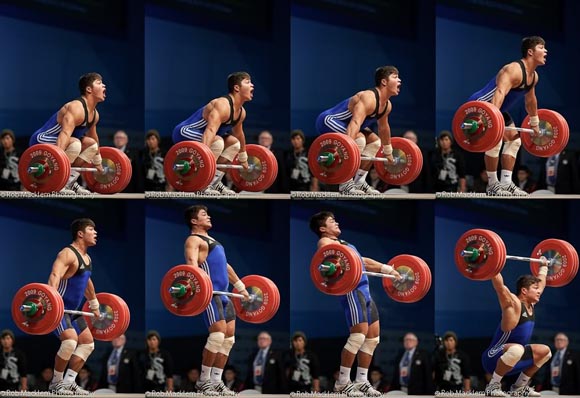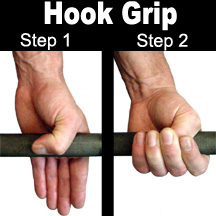The Snatch
All jokes aside, it deserves attention. It's arguably the most difficult lift we perform.
While pursuing fitness and athleticism, specifically overall strength, power, and coordination (while increasing ROM and focusing on results), it's an excellent move. Possibly the best. One of the Olympic Lifts that has been competed for years and is of course part of every Olympics.
We use snatches and related movements at Amplify to foster this athletic development, and we can safely perform the lift even while members are learning the movement. See a quick synopsis from CrossFit.com here. A variety of start and finish positions as well as countless drills build power and muscle strength and also the central nervous system response (memory of body position) for future development. You'll hear us use a slew of terms, so if you aren't yet accustomed to it, get used to those entering your vocabulary.
Just use it. You can ask why, but basically it sets the bar in your hands and allows a better pull.
A Quick Snatch Set-up Checklist: 1. Feet flat 2. Arms long 3. Back set 4. Chest up 5. Knees back
Let's see what it is we're focusing on with some quick video demos.
There are plenty of great technique and instructional videos out there; it just takes a YouTube search to find some. It's the quality clips you'll need, though, so start here:
California Strength http://www.youtube.com/user/CaliforniaStrength
When discussing barbell snatch technique, it's flat out essential to have visuals. So first up is a slow motion snatch by Natalie Burgener. Next in line is her father, Coach Mike Burgener, a well-known CrossFit instructor and the resident guru of Olympic Lifting. Finally, you see a few videos of elite level snatches, both men and women.
Slo-Mo Barbell Snatch (Blurry, but great "scoop" and hip extension)
Coach Mike Burgener (more start-up instruction here)
Behdad Salmi World Record
2011 Women's World Championships
Note, we will not be putting too much emphasis on the kettlebell snatch here, simply for the sake of brevity. KB Snatches are a great conditioning tool, and look a little like a traditional barbell snatch, with similar hip action needed... but are definitely their own exercise.
Kettlebell Snatch
If we look at the common errors in snatch development, it would make sense to examine a few limiting factors. What we see often are flexibility/mobility issues, bar path errors, and poor scoop technique. Confidence is sometimes lacking as well, which can keep an athlete from developing that experience and repetitions with the lift so necessary to make gains.
Mobility We've focused on this in weeks past, but it will be a recurring theme: maximize your flexibility and range of motion, and your missed lifts will become fewer and fewer (not to mention you'll remain safe through the catch). Make sure you can properly hang power snatch, overhead squat, and snatch balance before putting the snatch grip ground to overhead in effect through a full squat. Remember, this is a high skill move with lots of balance and coordination required. Warm-up is needed, which includes drills and segments of a full snatch. PVC and light loads will help alert the joints, namely the hip and shoulder sockets.
Bar Path This is the most common flaw, and starts in the set-up. If the bar is not moving up the body correctly from the ground (ie: moving away from the body at the start) then the whole lift is compromised. Lose snatches forward a lot? You're probably not pulling the knees back enough or you're allowing the bar to float forward around the knees early on. I know that's my personal issue when snatching, for sure. A very common result from a very common error. Correct this while keeping your chest and shoulders up and over the bar and your success rate increases immediately. Which leads us to...
Scoop Technique The "scoop" comes naturally in a good snatch. Also known as the double knee bend, it's the point where the barbell gets to what is commonly referred to as your power position... the bar makes contact with your thighs and you've put an acceleration on the weight in set up for triple extension (hips, knees, and ankles). It is sometimes coached as the "jump," although that can often be a bad cue for certain people, since they may move to the balls of their feet too early or kick the bar out from their hips too far à la a kettlebell swing. The scoop is a result of keeping the barbell close to the body so it can travel the straightest line upwards overhead. Search "snatch scoop" and you'll get more visuals and technique instruction. But a bad idea is to try too hard to scoop. It'll cause an early arm bend and loss of power.
And look at that... I made it all the way through a Snatch post without one bad joke or innuendo. Yay!
-Scott, 9.10.2012

